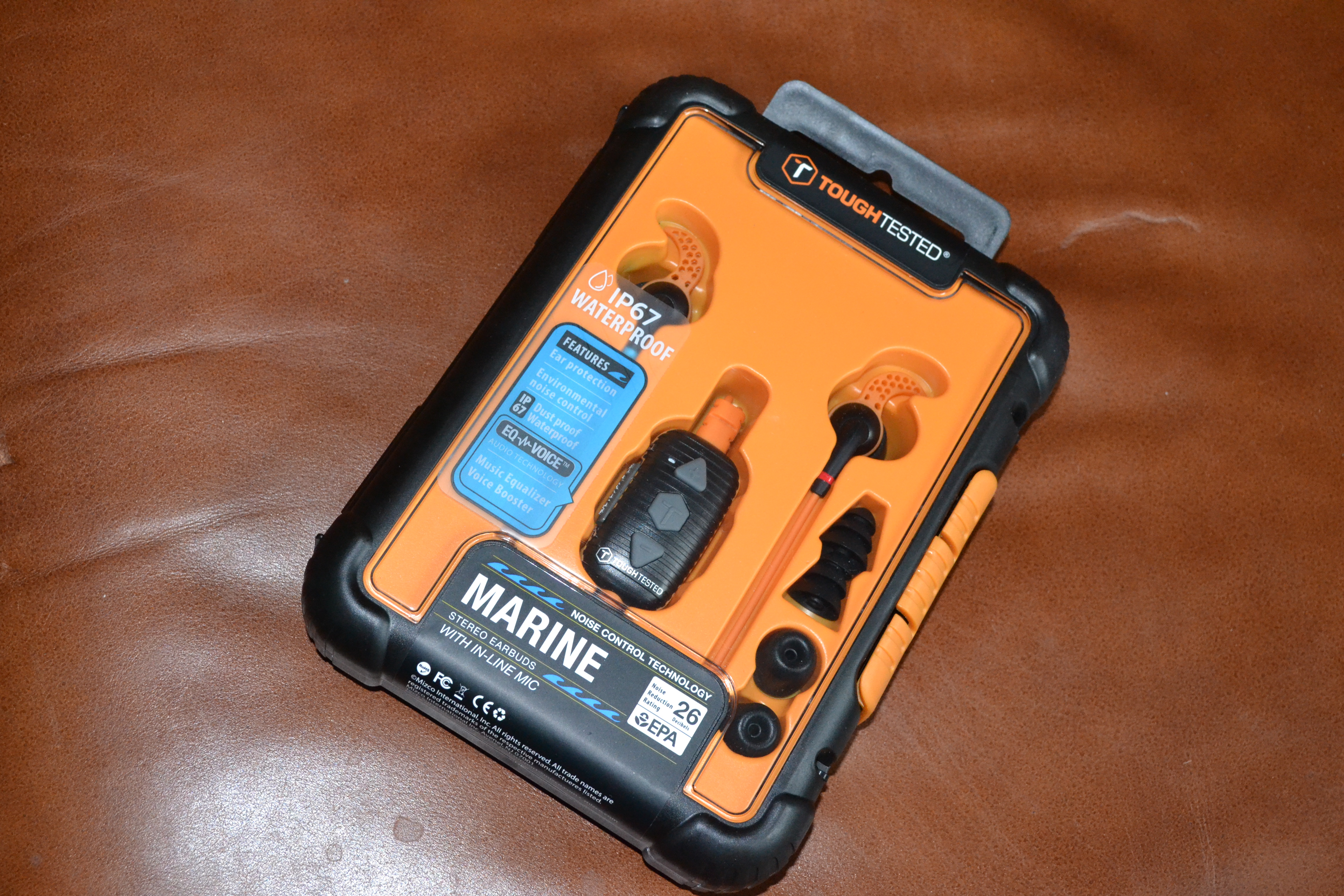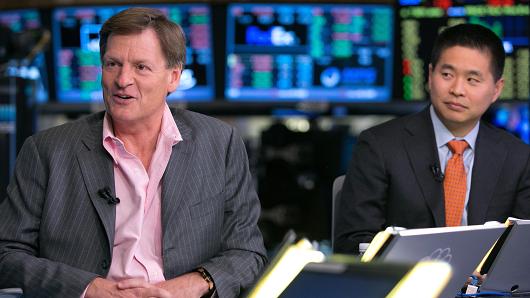
by Lidia Paulinska | Jan 29, 2016
Tough Tested Marine stereo earbuds with in-line mic are nicely package with some extras inside (including three tips and 3.5 mm extender) and clear description of the product and its use on the front and back of the box. That gives a customer good feeling about the product and suggests that the producer cares about the first impression. As well as printed certifications information that stated that the Tough Tested Marine earbuds are certified noise control earbuds, Noise Reduction Rating 26 Decibels as well as they hold IP67 rating to protect against dust/sweat and water. IP stands for “Ingress Protection” and is used to specify the environmental protection of enclosures around electronic devices. Number 6 means – Totally protected against dust, number 7 – Protected against the effect of immersion between 15cm and 1m.
There are also an exclusive EQ-Voice technology added to the features. If a phone call comes while listening the music, the equalizer automatically boost and clarify the voice of the caller. That is something that many earbuds are missing. There are some more about Marine earbuds or rather the cable. It is Kevlar reinforced for durability and it partly coiled what gives the extra length on the cable if is needed without danger of tangling.
The product comes in orange-black colors that bring to mind the association with construction work in tough harsh environment. And it is made for it. But if you are going hiking into the woods, boating on the river, fishing in the lake you need durable and rigid equipment that can handle harsh conditions and protect you from outside noise. You need the Marine earbuds. But they also gives you a comfort like soft silicon ear coding and nice texture.
The company that produces Marine earbuds, is already know of their durable power solution products and recognizable for safety features. Now it is entering the audio field.

by Lidia Paulinska | Jan 29, 2016
January, Churchill Club Event – On January 21, 2016, the Churchill Club sponsored a discussion between Michael Lewis, celebrated journalist and author of the best-selling Flash Boys: A Wall Street Revolt, and Brad Katsuyama, “hero” of the book and co-founder and CEO of IEX (Investors Exchange), a stock exchange dedicated to investor protection against unscrupulous stock market manipulations. The discussion focused on Mr. Lewis’ 2014 book, and was ably moderated by Rami Branitzky of Sapphire Ventures. The event was presented to a packed house at the Computer History Museum in Mountain View, California, appropriately adjacent to a sprawling Google campus.
The central issue Mr. Lewis and Mr. Katsuyama addressed was high-frequency traders (HFT), the predatory villains on Wall Street who use their superior speed technology to take advantage of what’s called latency arbitrage , meaning they explore minuscule differences , like milliseconds (1,000th of a second), in the time it takes various traders and markets to receive data and then execute orders. The resultant latency arbitrage forces normal, i.e., slower traders, to pay more and the fastest traders make the most money. These tiny delays allow high-speed traders to see a price fluctuation on one exchange (there are 11 public stock exchanges) and then quickly send an order to another market that it knows updates its prices more slowly, hoping to grab orders just sitting there at stale prices. Mr. Katsuyama’s IEX prevents so-called stale quote arbitrage by using electronic “speed bumps” to slow down all new orders and thus create a level playing field.
At one point in the discussion, Mr. Lewis expressed surprise that there seems to be little if any public outcry regarding some of the revelations in his books, like for example in The Big Short and in Flash Boys that expose a rigged stock market abetted by crooked banks. But he claims what most astonished him were the responses he got on many college campuses where rather than displaying outrage at the systemic inequities in our financial system, the students seemed more interested in finding out how they too could get in on the action and make big bucks themselves!
by Lidia Paulinska and Hugh McMahon

